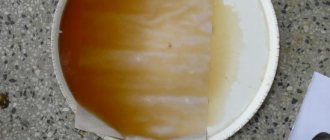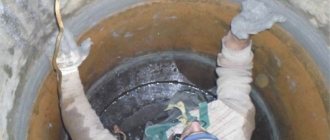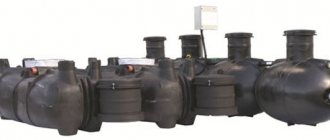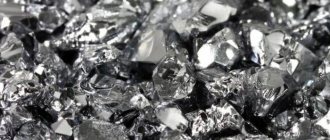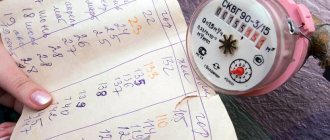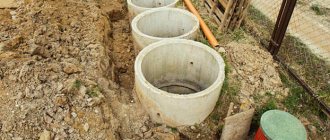Prologue
In the past, for all sorts of “thermal technologies” (of course, except for soldering and dismantling radio components), I used a small lighter with a nozzle. But a gas burner, in terms of producing a hot stream of air, has a number of disadvantages. With its help, it is impossible to smoothly regulate the temperature, the size of the torch depends on the amount of gas in the tank, an open flame can cause a fire, and finally, you need to buy gas in cans.
So, it was decided to make a small hairdryer from all sorts of rubbish that can be found in the bins of a DIYer. An additional incentive to produce this device was the price of a factory-made hair dryer, which starts at about $30.
I note that during the assembly and testing of the subject, I built another, still speculative, model of a hair dryer with higher power. So, if you need a more serious unit, stay tuned for new publications.
Hot air gun device
A self-made hair dryer for soldering microcircuits is generally assembled from the following available components:
- a fan of a suitable type that plays the role of an air flow shaper;
- an electric heater designed for thermal heating of a hair dryer;
- a housing with an air duct and special nozzles that ensure the formation of a heated jet with specified parameters;
- two blocks designed for separate power supply of the fan and heater elements.
The power of a homemade soldering hair dryer should be enough to produce a stream of air heated to approximately 600-800 degrees (at such temperatures you can work with any type of solder). In this case, the power of the built-in electric heating element cannot be less than 2.5 kilowatts.
Main parts and materials
I've had this fan lying around idle for a while now. These 40mm fans used to be widely used in PC 486 and video cards.
This unit will require minimal modification. You will need to re-insert the wire into the attachment point.
I didn’t have a tube of a suitable diameter for the heater air duct, so I borrowed it from a ten-watt resistor type C-5-5. To free the tube from the insides, I sawed off one of its rolled edges with a file.
I do not recommend using ceramics or quartz glass for the heater air duct, as these materials can be destroyed if flux or wash accidentally gets on a heated surface. I’ll tell you a secret, I did my first experiments with a ceramic heater air duct, which collapsed at the first thermal shock. So, it is better to choose steel or, at worst, some non-ferrous metal.
In order not to bother with making a mica frame, I used a wire with a diameter of 1.2 mm from some kind of rheostat. I think a wire with a diameter of 0.5-1.5mm will do. If you choose a thinner wire, it will not be securely fixed in the housing, and if you choose a thicker one, you will have to increase the cross-section of the cable, which will make the latter too rigid.
Mica will be needed to make a gasket that insulates the coil from the heater tube. The fiberglass will serve as thermal insulation between the heater tube and the hair dryer body.
To make it more convenient to work with recalcitrant materials, you need to use “Rubber Glue”, “88H Glue” or “Moment” glue. Mica can be glued to fiberglass or even paper. The fiberglass can simply be glued and dried. As a result, the glue will burn out, but at the assembly stage it will provide indispensable help.
The heater spiral must be wound in such a way that it is inserted into the tube with a gap, which will subsequently have to be filled with a mica gasket. If you can find a tube of suitable diameter, you can insert the end of the wire into the tube and only then wind the spiral. I didn’t have such a tube, so I simply wound the wire around a metal rod, and then screwed the central wire inside the spiral. This technique is shown in the video>>>
I have used these wonderful products many times to solve completely atypical problems. In this case, electrical terminal blocks will transmit current from the cable to the spiral and fix the position of the spiral relative to the front edge of the tube (to prevent the spiral from shorting to the body).
To make the body of the hair dryer, we will use tin obtained from any non-corrugated tin can.
Often the cylindrical surface of the cans is hidden by a label. If you run your fingernail along the side of a jar in a store, you can easily recognize a jar with a smooth side wall.
From the cylinder of a five-gram syringe we will make a hair dryer handle.
Possibilities of a hair dryer
Before discussing the independent production of such a household appliance, which is very dangerous during operation, we will consider all the possibilities of an industrial hair dryer so that skeptical people will change their attitude towards this product that is needed in the household. Let's start with practical application and list the main points in which its use would be advisable:
- remove unnecessary stickers on any basis, as well as price tags and information plates for goods that are out of date;
- remove vinyl coating from any media without the use of chemicals or mechanical stress;
- melt resin, bitumen or wax to coat the surface;
- make an original set of candles for a gift;
- bend a plastic pipe of any diameter in the right place;
- remove old paint from any coating without using a sharp cutting tool - only a spatula;
- unscrew stuck nuts and screws;
- remove a blood clot in the water supply system by defrosting;
- warm up the frozen lock on the car door;
- solder thin-walled copper tubes;
- bend thin wooden parts;
- connect a torn garden hose for watering;
- Dry rain-soaked building materials;
- dry the wall after it gets wet due to careless neighbors;
- solder delicate thin-walled copper pipes together;
- form and solder plastic pipes;
- shape and bend any wooden part;
- connect garden watering hoses together;
- dry building materials, paints, varnishes;
- Light up the grill in any weather.
As you can see, the range of applications is quite impressive. A homemade construction hair dryer will especially help when repairing a car, while experts say that there is no alternative to it in almost any operation - be it body decoration or soldering a plastic bumper.
Drawings of a homemade soldering gun
This is an assembly drawing of a soldering gun. I was too lazy to draw isometric projections, but you can see the soldering gun from all sides by watching the video posted at the beginning of the article.
And this drawing shows the attachment point for the electrical terminal block. The M3 screw securing the terminal block is isolated from the tin body using a small piece of cambric (polyvinyl chloride tube) and an M4 fiberglass washer. An M3 fiberglass washer is placed between the screw heads and the nylon handle of the hair dryer. This washer prevents heat transfer from the electrical terminal block to the hair dryer handle through the M3 screw.
A drawing of the body of a miniature soldering gun in A4 format and 300dpi resolution is located under the thumbnail. If you print it on a printer and stick it on a tin from a tin can, then you can easily make the most complex part of this homemade product.
Small details
Let's look under the fan to see how the coil is connected to the cable. The design turned out to be very repairable. It is enough to unscrew just a few screws to replace the spiral, for example, in order to adjust the resistance of the spiral to the voltage of an existing power source.
I soldered the petals to the heater cable, but it was possible to roll the ends of the conductors into rings and tin them, just like we do when we change a collapsible power plug.
Most of the things I intend to do with a soldering iron require both hands free. Therefore, I made this stand for fixing the hair dryer on the table. A clamp with an open perimeter allows you to securely hold the hair dryer and, if necessary, easily remove it from the stand.
This is how the soldering gun turned out.
Technical data
The hair dryer fan is powered from a 12 Volt DC source.
The heating element of the hair dryer is powered by an alternating current source of 0...12 Volts. With its help, you can change the temperature of the air flow, from room temperature to 600°C.
Mini-hair dryer parameters at temperature limits.
The diameter of the nichrome wire of the heating element spiral is 1.2 mm.
The heater supply voltage is 9 Volts.
The heater current is 11 Amperes.
Heater power - 100 Watt.
Air flow temperature - 600°C.
The time it takes for the hair dryer to reach the selected temperature mode is 1 minute.
I didn’t make a special power supply for my hair dryer, so I have universal sources of different power at my disposal.
If you do not have a suitable power source, then you can adjust the resistance of the spiral to one of the output voltages of the ATX computer power supply or make the simplest power supply from the ballast of a burnt-out CFL (Compact Fluorescent Lamp). For a detailed description of the modification of the power supply based on CFLs, see here>>>
In the picture, a circuit of a switching power supply for a miniature soldering gun, assembled on the basis of a CFL ballast. Additional elements are highlighted in red. Pulse transformer TV2 has two secondary windings. One of them powers the fan, and the other powers the heater coil. To adjust the temperature of the coil, switch S1 is used.
Hair dryer installation
Having prepared everything you need, you must not forget about the electrical circuit - without it you cannot properly assemble a homemade hair dryer with your own hands. Let's start modernizing an old, long-used hair dryer. First of all, we remove all plastic parts and replace them with similar ones, but made of ebonite or textolite.
We make a spiral for the heater as follows: we wind a nichrome thread onto a rod of the required cross-section, resulting in the required twisted structure. Its main feature is that the more turns, the higher the temperature. At the same time, we make sure that adjacent turns do not touch under any circumstances - this is fraught with a short circuit. Nichrome cannot be soldered, so we screw the ends of the spiral to the power cord and insulate it well or use special blocks into which we insert the ends of the wire and the connectors of the network cable.
As an additional insulator, a rubber tube is placed on the handle of a DIY hair dryer. The best option would be an old corrugated hose from a vacuum cleaner; it is quite rubberized inside and will perfectly protect your hands from excess temperature.
If the heating part is located far beyond the main body, then the handle may not be insulated; however, the homemade design looks like a long-nosed alien from a neighboring galaxy, but it serves its purpose properly.
At the final stage, you must remember that first the fan turns on, which begins to suck air into the device, only then can you turn on the heating element. When finishing the work, everything happens exactly the opposite: first we turn off the heating circuit, and then the air supply system.
To ensure an uninterrupted supply of air flow inside the product, some craftsmen use a compressor for an aquarium, only selecting its power and performance accordingly.
After making a hair dryer, it is necessary to check its functionality; for this it is better to use some low-value surface, because the temperature still needs to be adjusted during the finishing process of the product.
Normal operation of a hair dryer looks like this:
- first the fan or air compressor turns on;
- then voltage is applied to the spiral, it heats up;
- the air passing through the zone is heated to the optimal temperature and exits;
- the nozzle installed on the hair dryer directs it to the right place.
About the heater temperature and the choice of material for its body
The operating temperature of the nichrome spiral should not exceed 1000°C. The temperature of a hot coil can be approximately determined by its color. The table shows temperatures in degrees Celsius.
| Metal | Temperature °C |
| Aluminum | 660 |
| Duralumin | 650 |
| Brass | 1000 |
| Copper | 1080 |
| Nickel | 1450 |
| Nichrome | 1550 |
| Steel | 1300 |
As you can see, copper, brass or steel are best suited for making the heater body. But, copper and brass quickly oxidize at high temperatures. Therefore, it is better to choose steel or nickel-plated steel.
If you have defective lithium-ion batteries at your disposal, you can make a tube from the body of one of the cans. The housings of the cans of any lithium-ion batteries and lithium-ion batteries are made of stainless steel.
The picture shows a disassembled laptop battery. The diameter of the can body is 16mm, length – 65mm. How to disassemble a laptop battery is described and shown here>>>
And this photo shows a disassembled “EN-EL1” battery from Nikon cameras. Can diameter 14mm, length – 48mm.
Attention!
The contents of lithium-ion battery cans and lithium-ion batteries are extremely toxic! Therefore, cans should be disassembled outdoors, and the extracted products should be sealed in a secure container and taken to a battery recycling point. Such items are usually available in large supermarkets and specialty stores.
